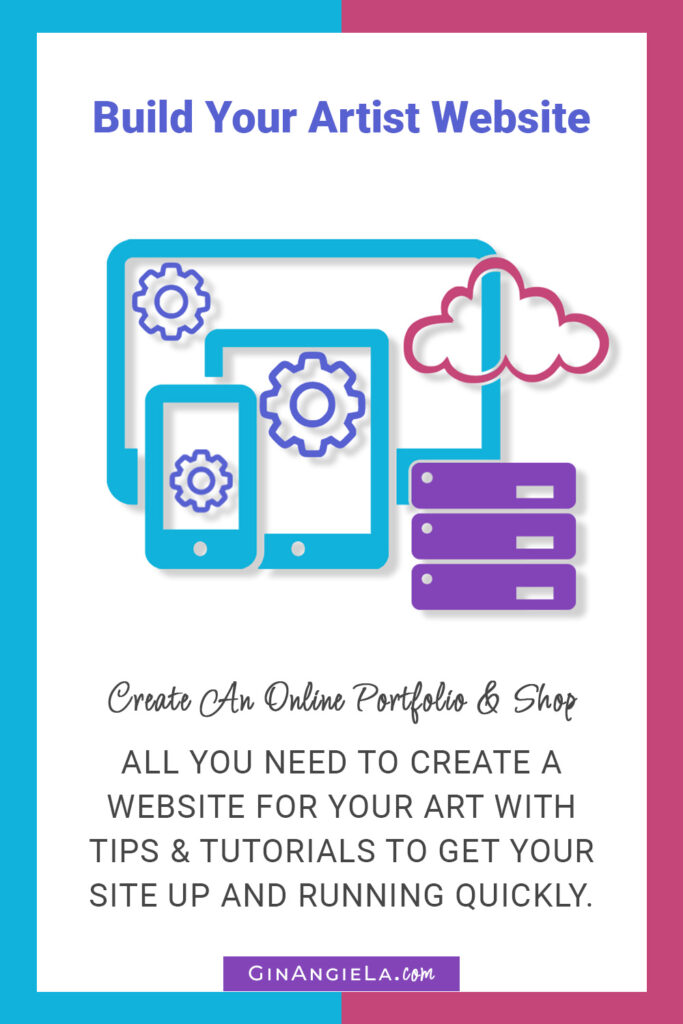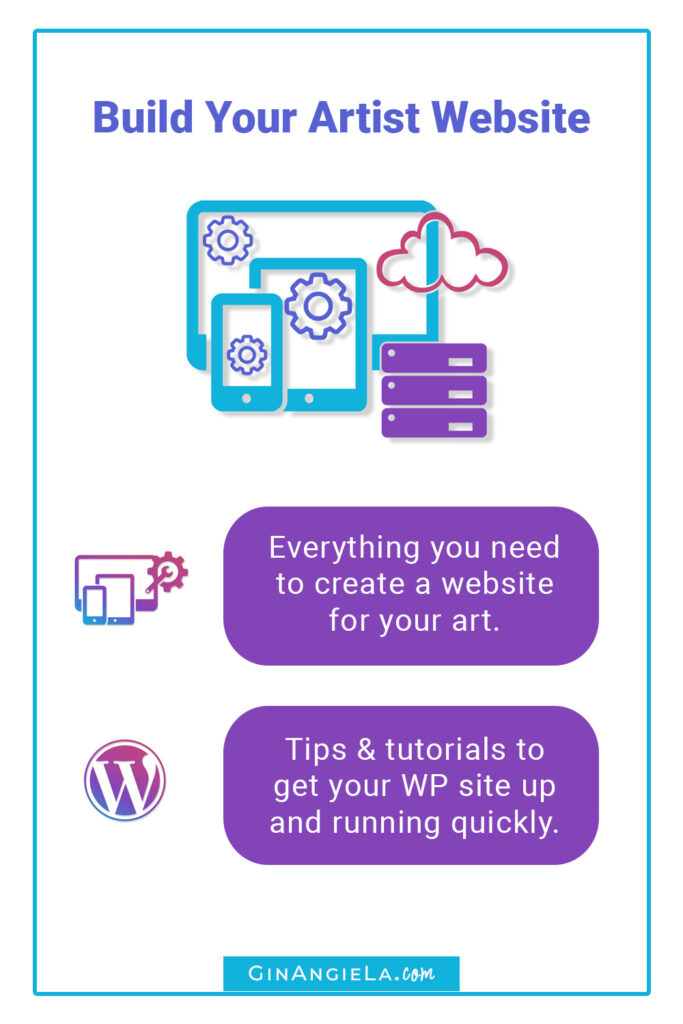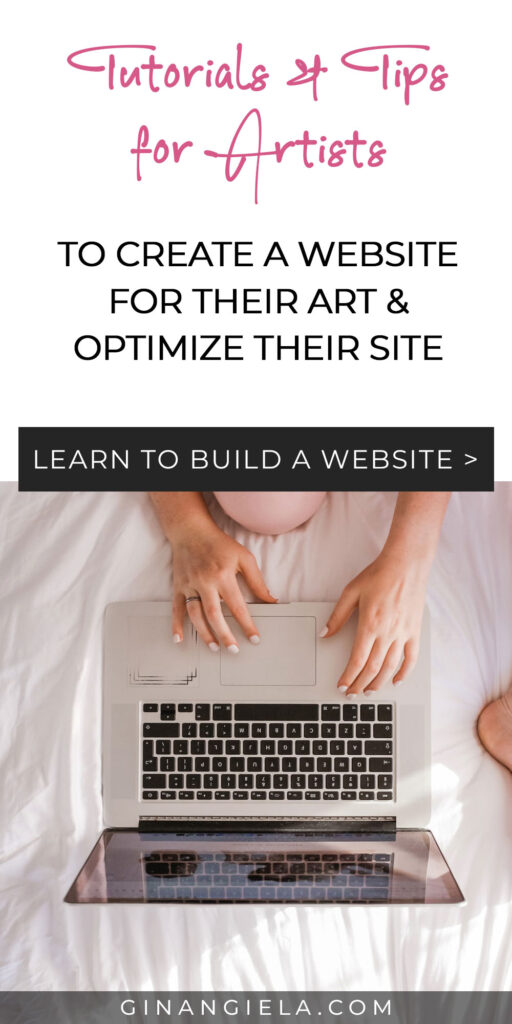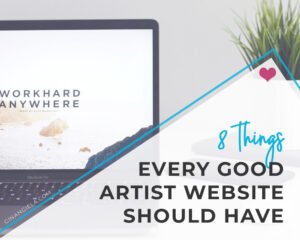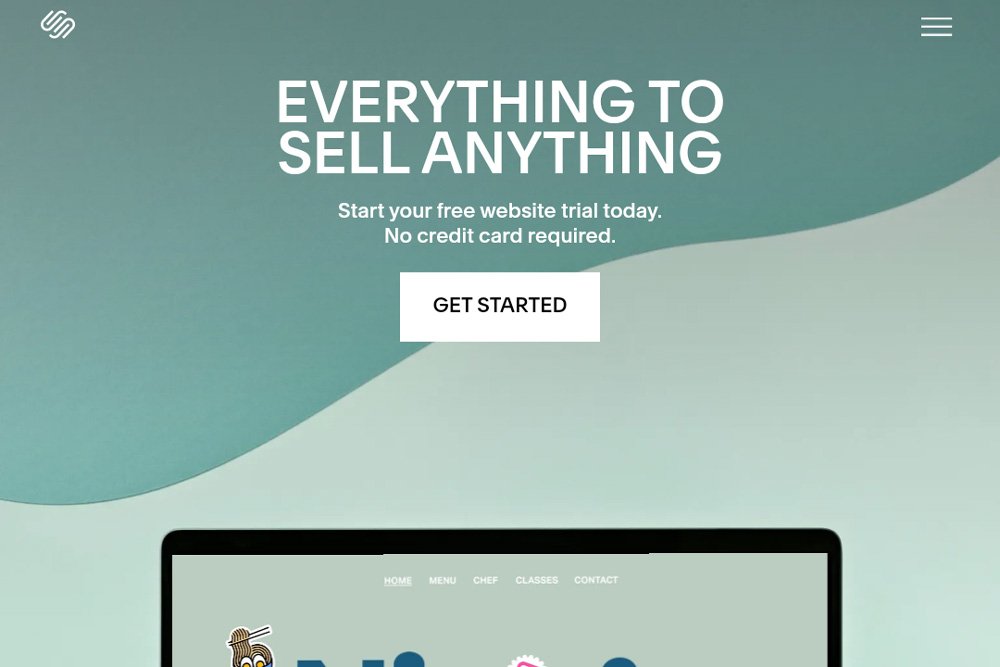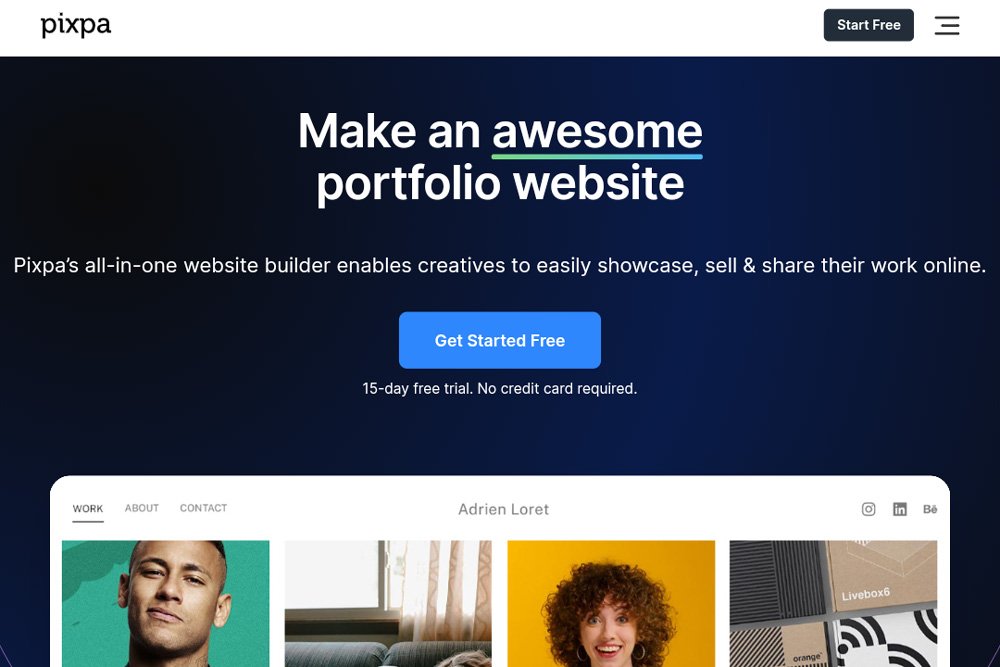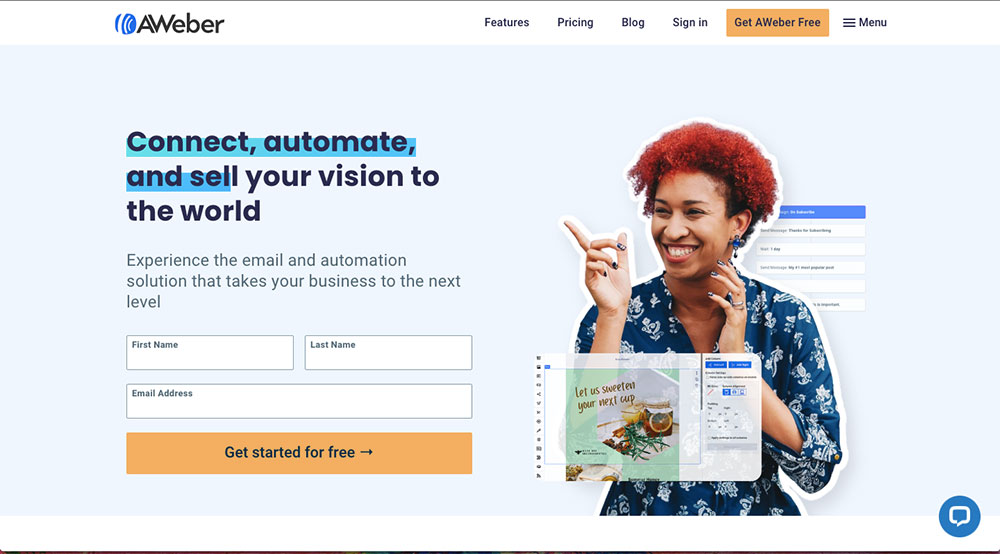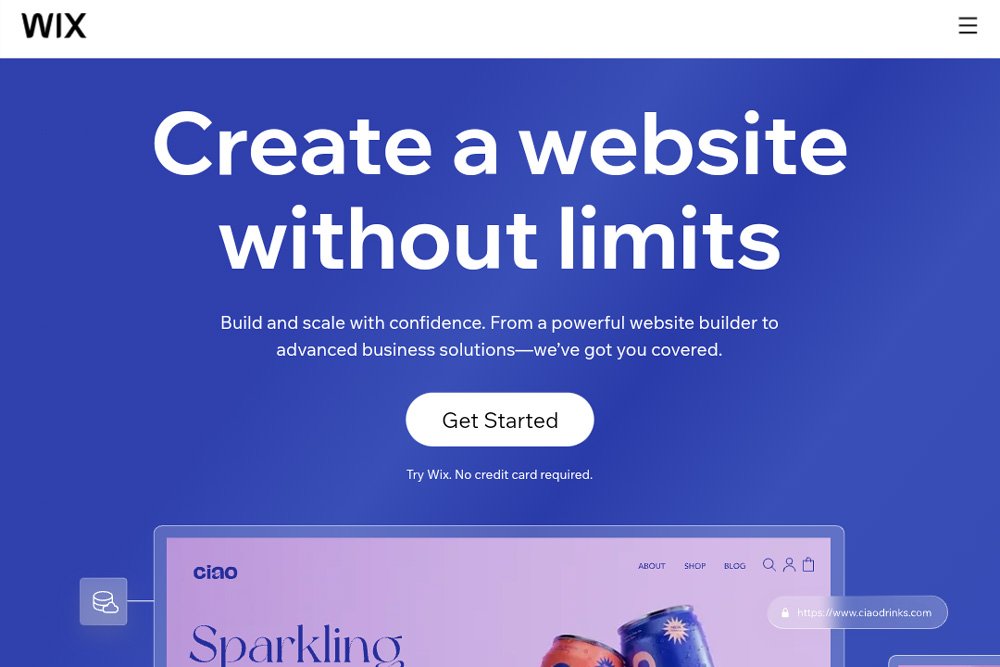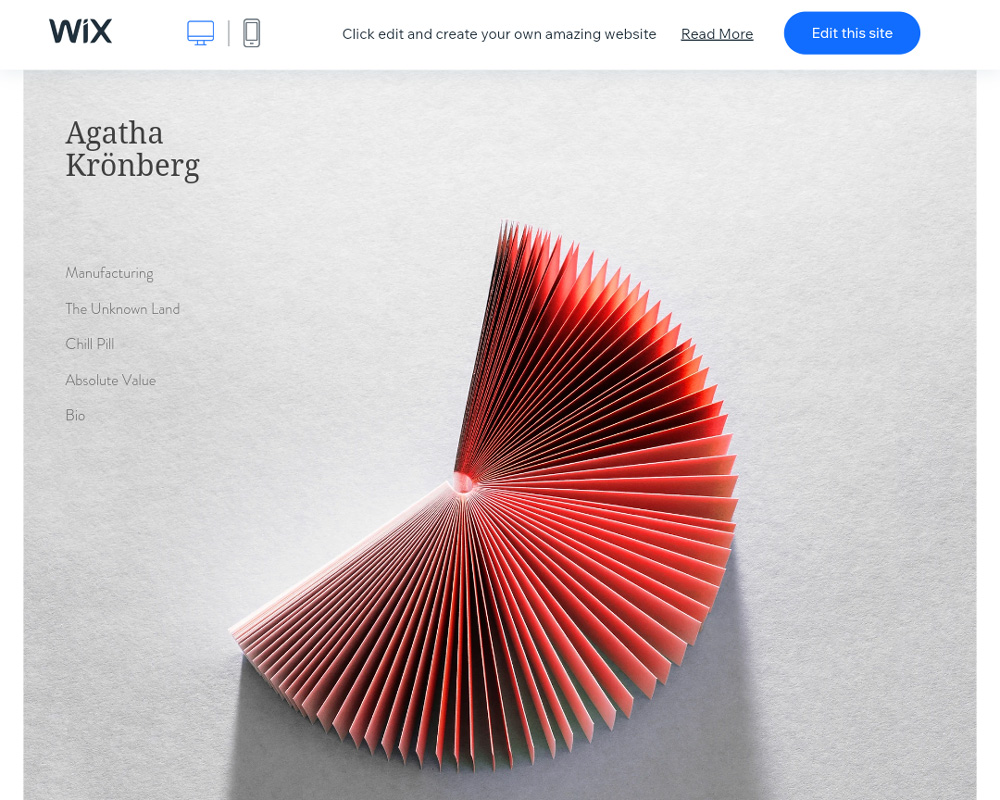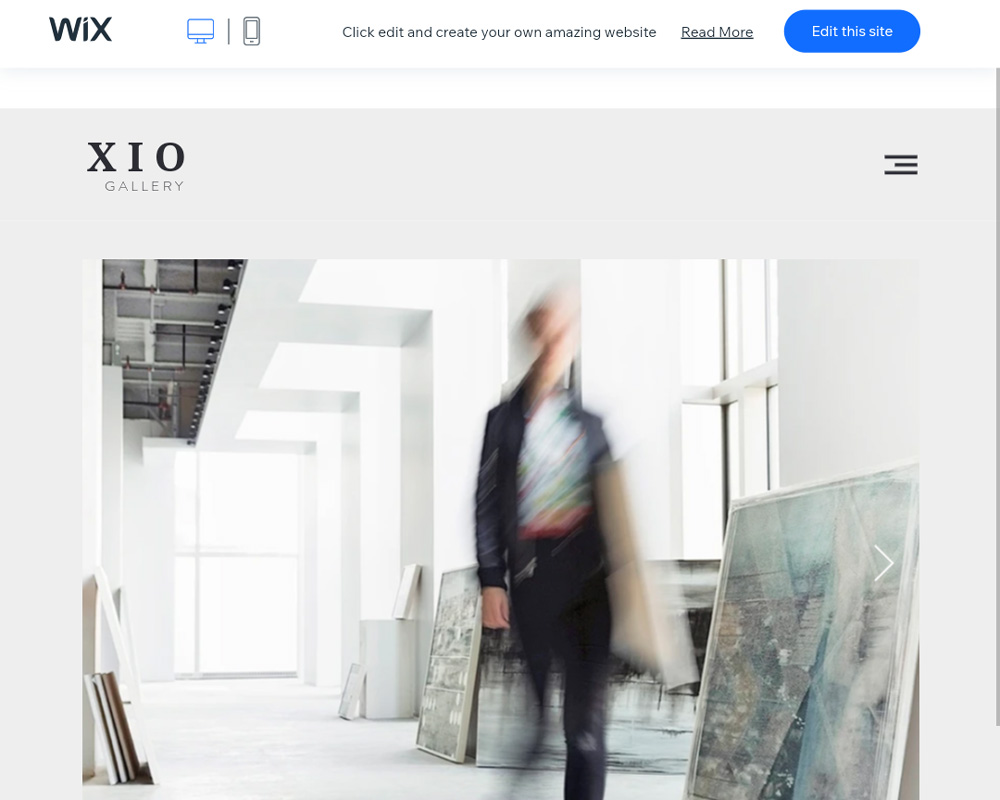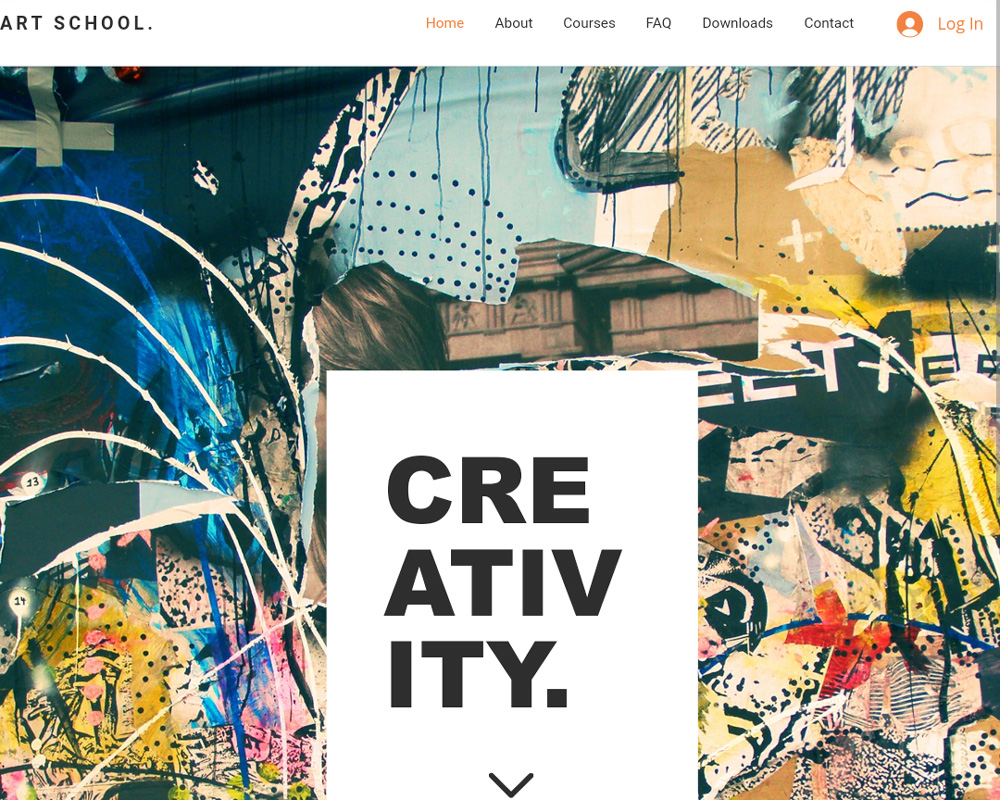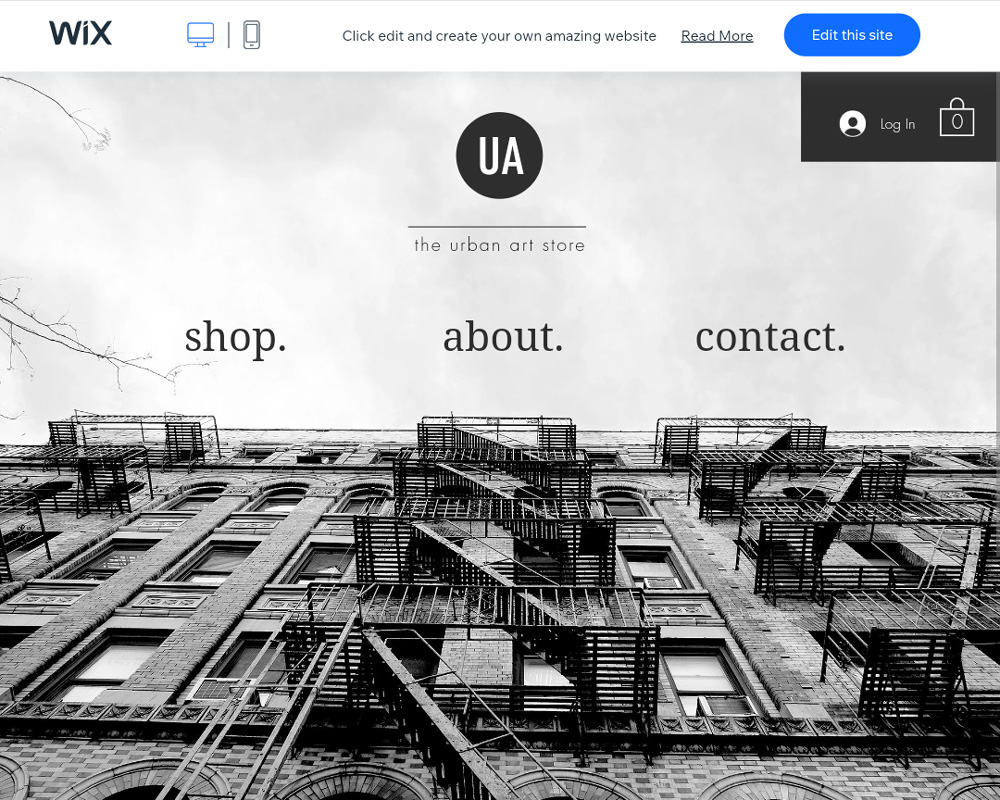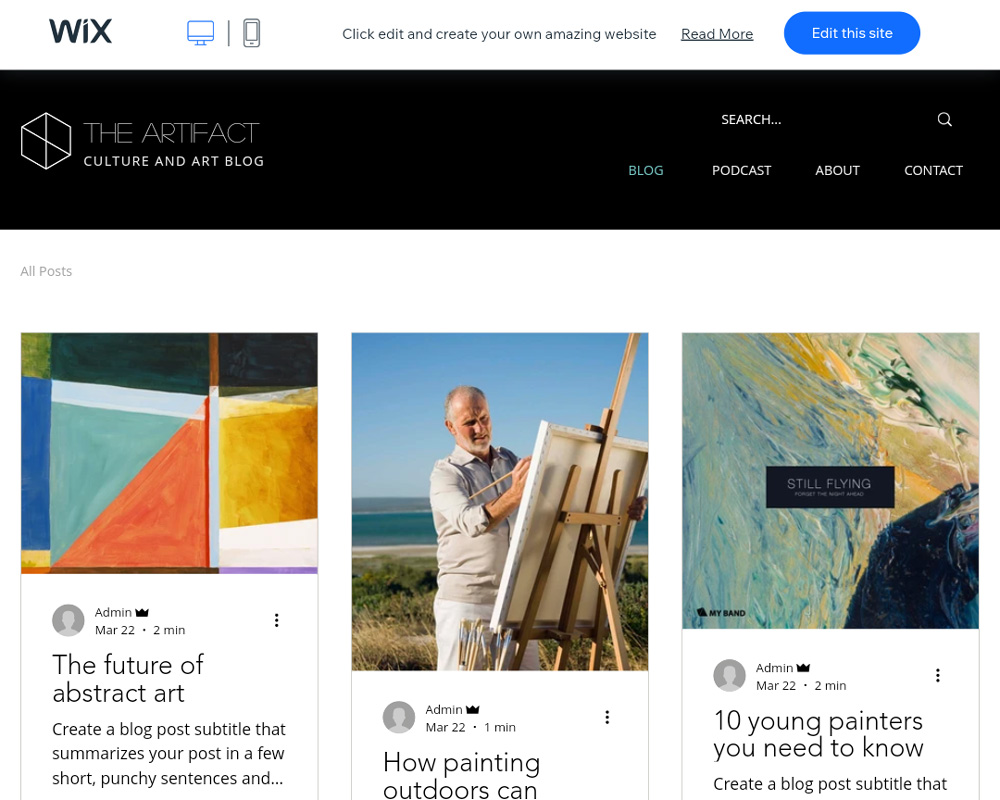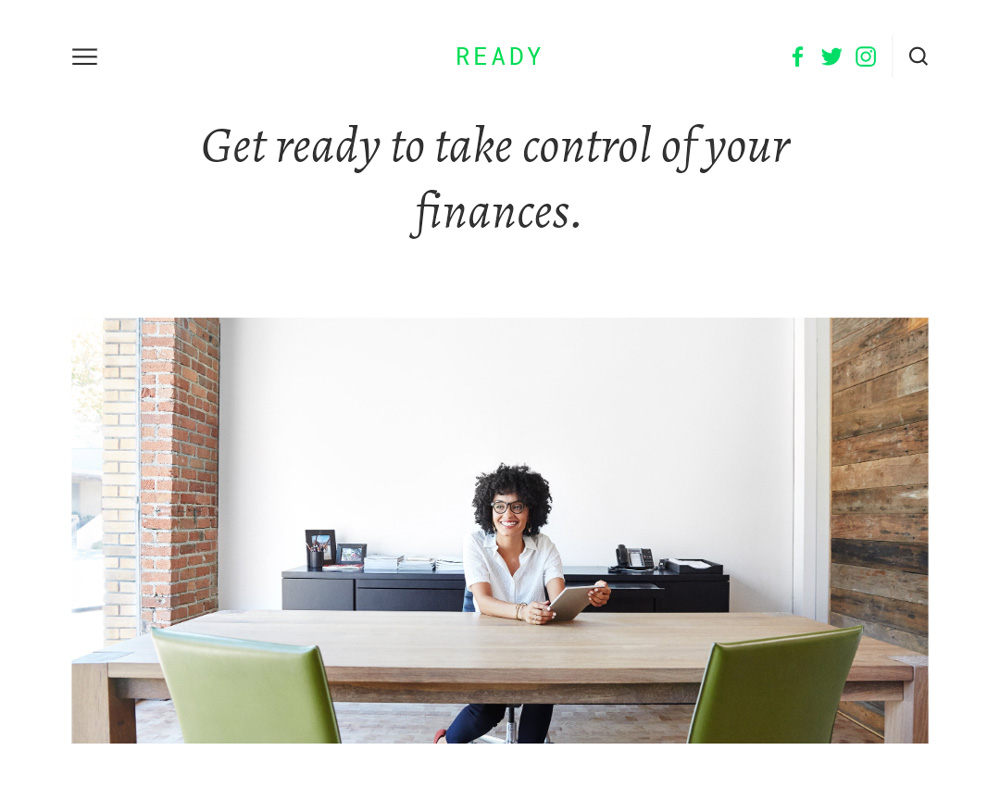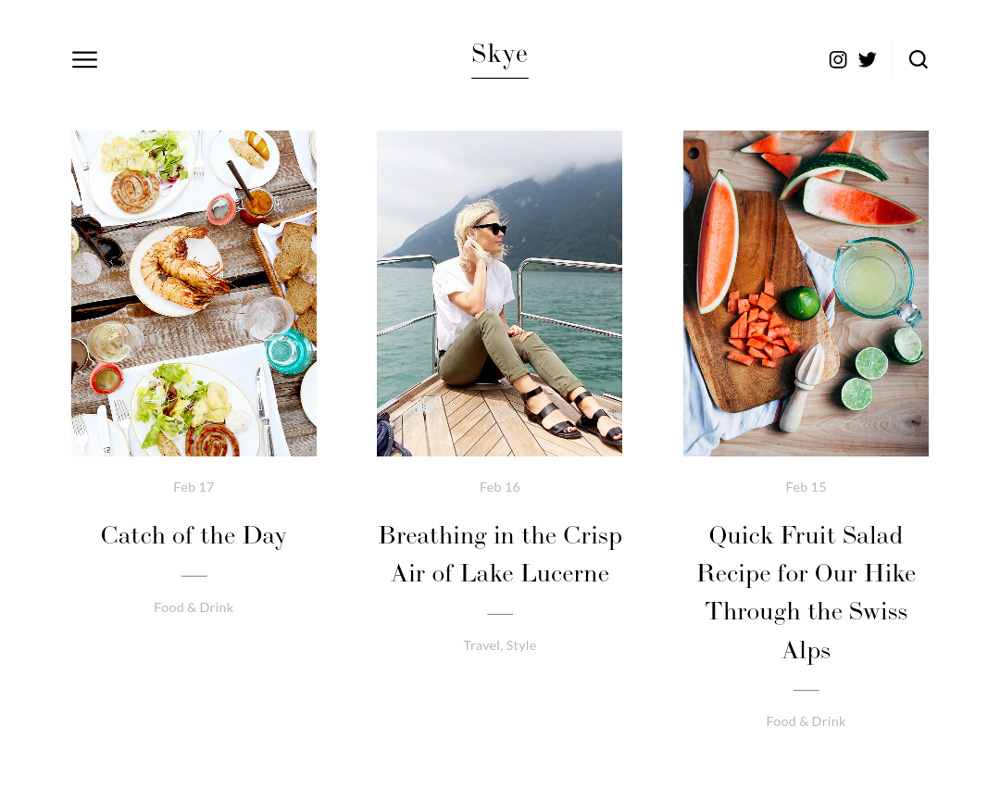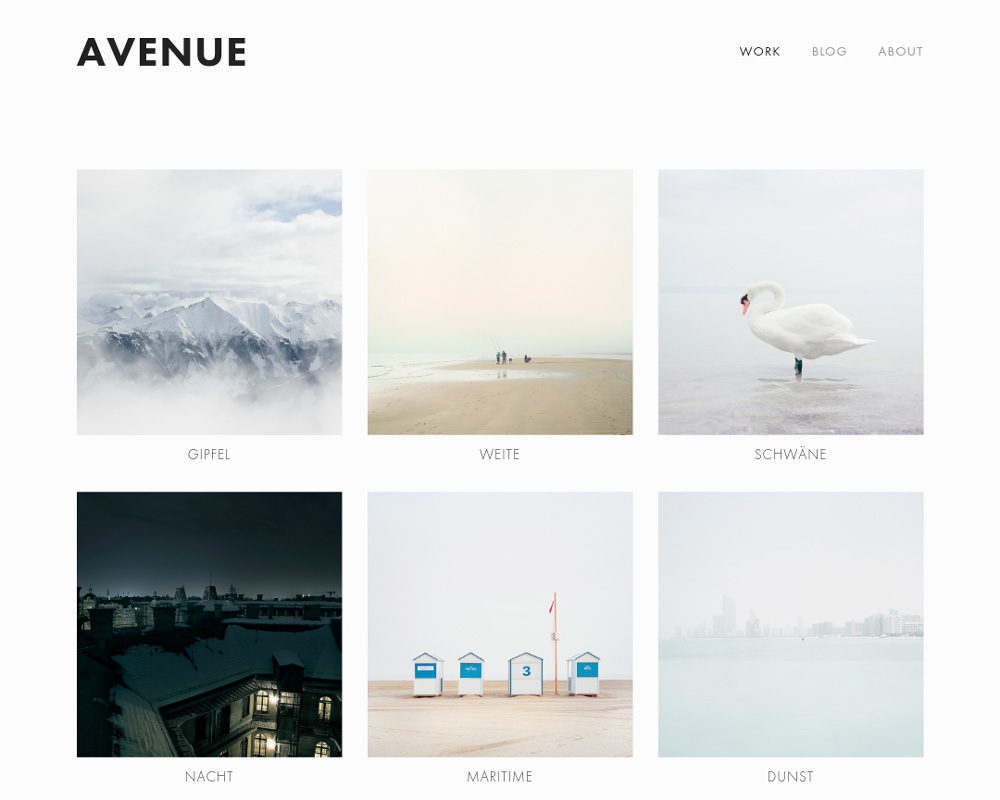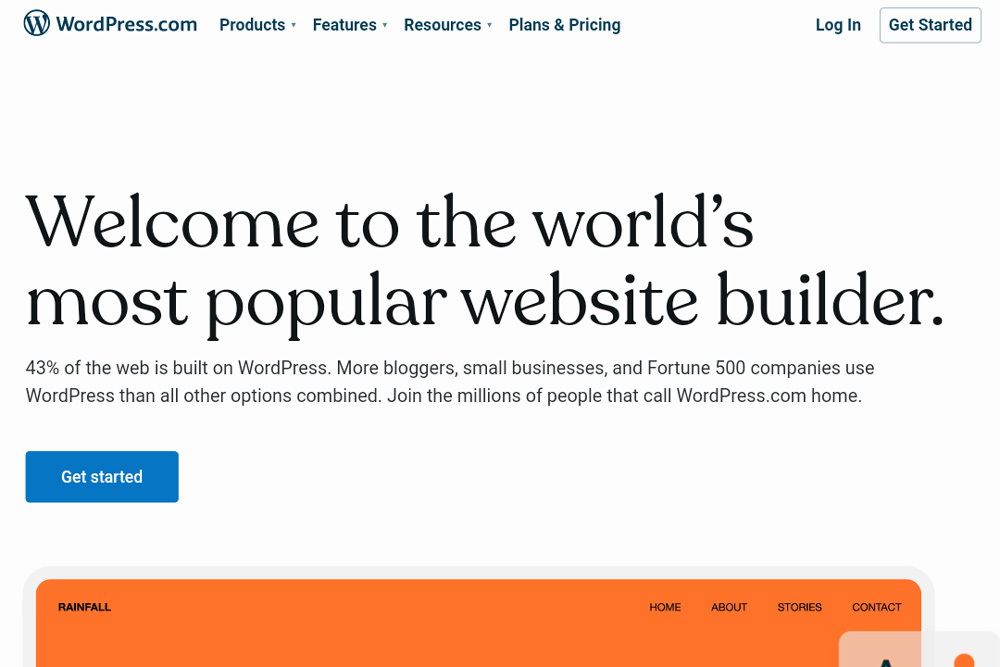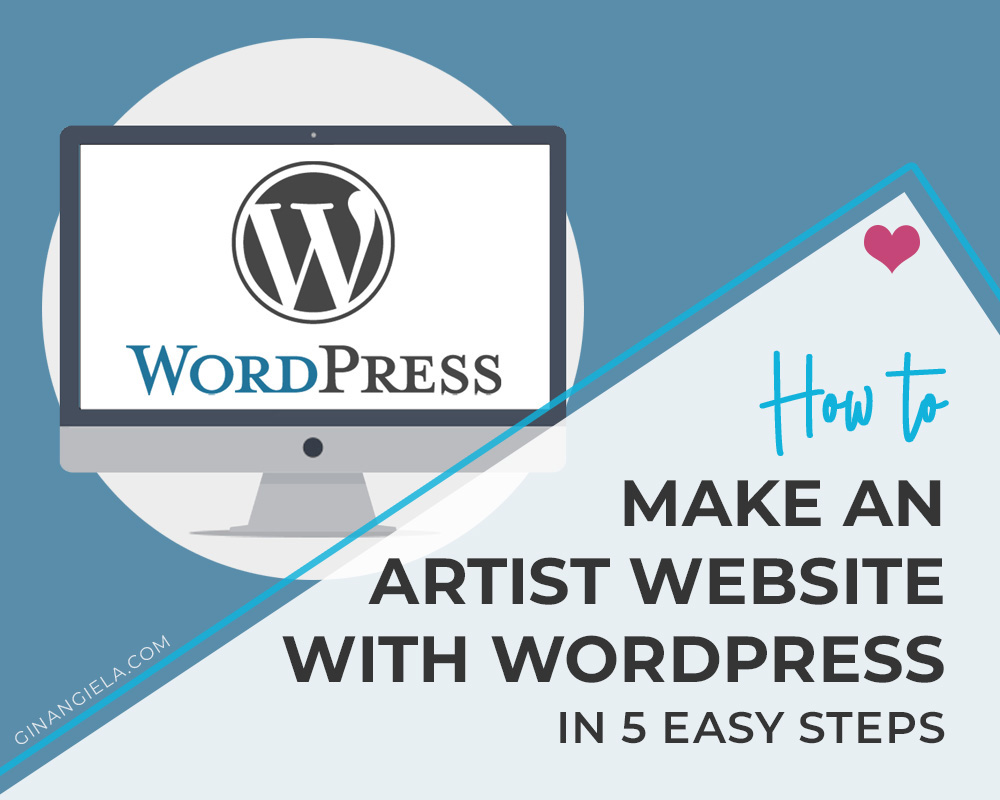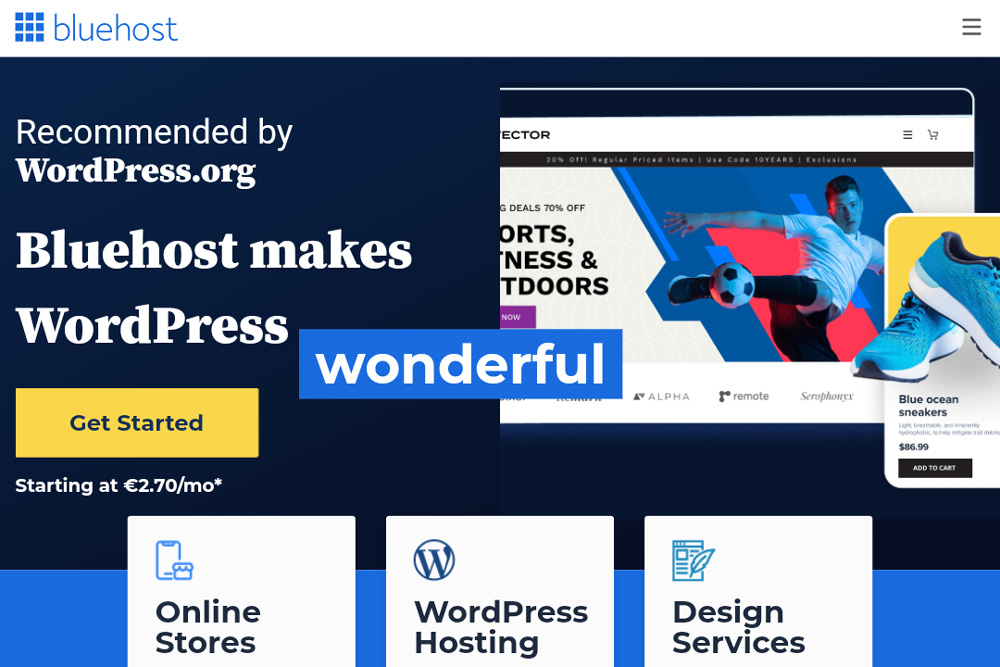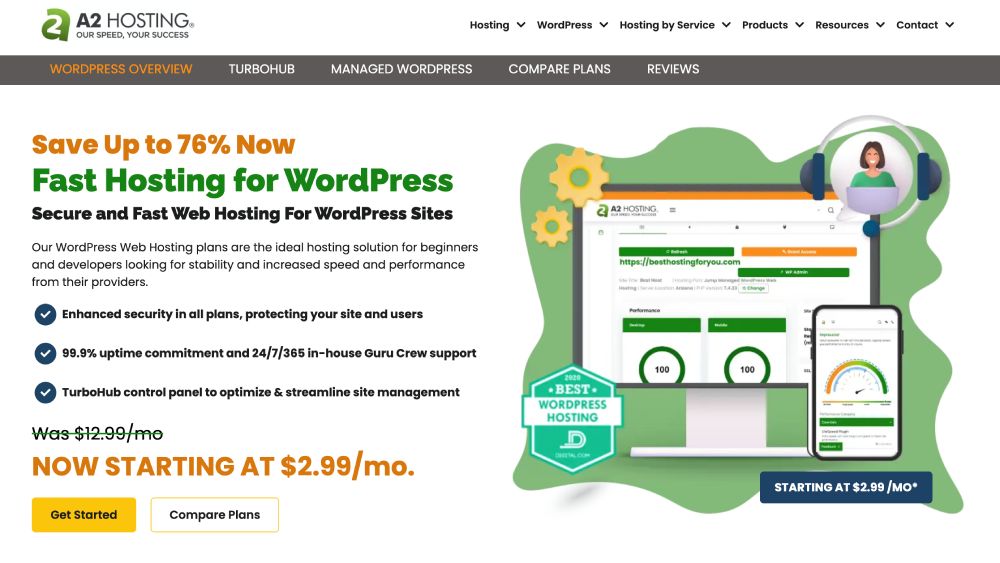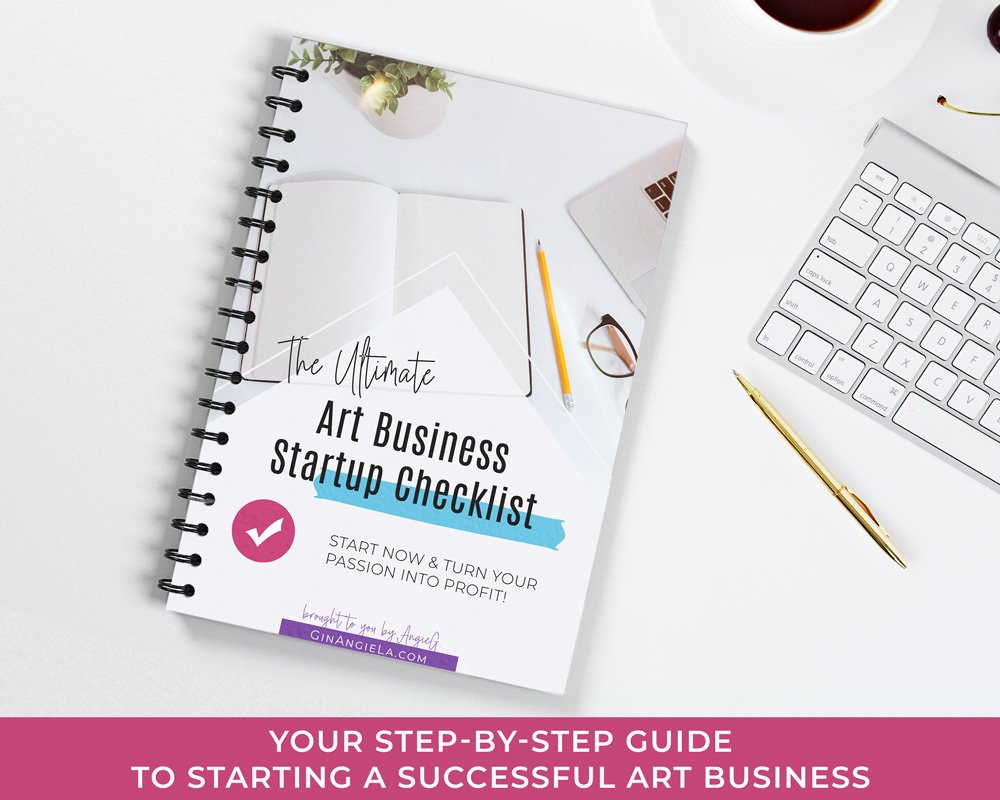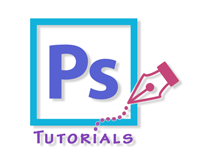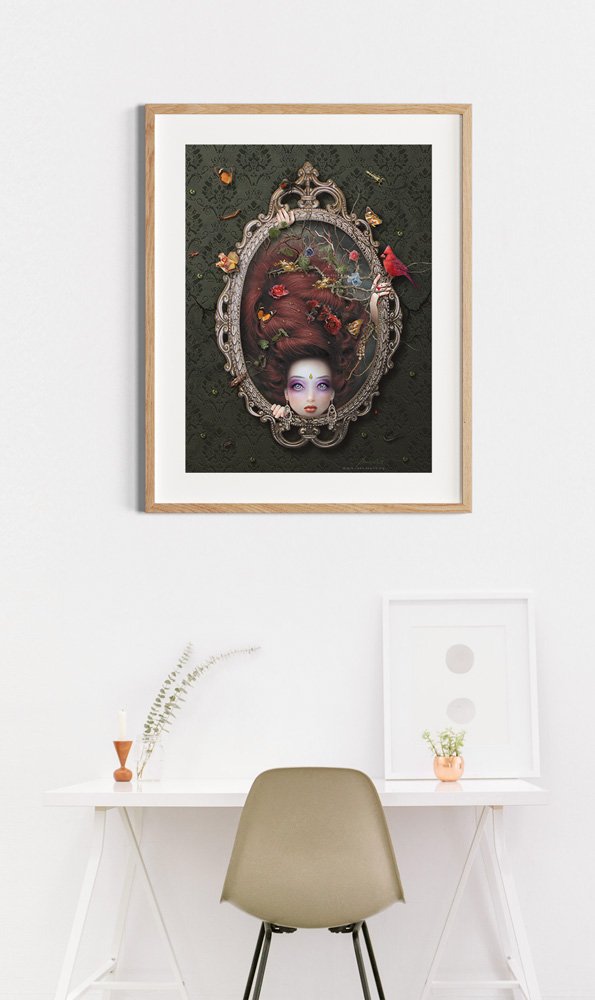Build Your Artist Website
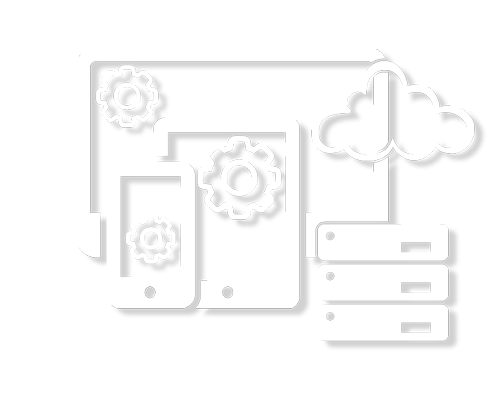
 Get premium WordPress hosting at unbeatable prices. Only for a limited time!
Get premium WordPress hosting at unbeatable prices. Only for a limited time!Popular Artist Website Posts
All Resources For Building Your Artist Website
Your Artist Website

Everything you need to create a website for your art.
All Things WordPress

Tips & tutorials to help you get your WP site up and running quickly.
Popular E-Guide
Frequently Asked Questions
Should I make a website for my art?
The internet holds enormous potential for creatives of all fields. Whether you’re a traditional painter, digital artist, or even a writer or poet, making a website for your art is the most effective way to build a brand, market your products or services, and showcase & sell your art.
Nowadays, you don’t need a middleman anymore – like an art gallery or a curator – to sell your artwork. People discover their favorite art first-hand, simply by going online and typing a search query into Google or another search engine. If you have an artist website, then your work can be found easily. Your own artist website is able to get you a level of exposure that was unthinkable before.
Creating a beautiful artist website isn’t difficult. You don’t need to be a coder or techy person in order to design your artist website. With the many website builders out there, everyone can create a website for their art – with just a couple of clicks and no coding experience whatsoever. And if you don’t want to do the work yourself, you can find lots of affordable website designers for artists online who will create the basic layout for you, and you then just need to put in the content for your art website.
Should an artist have a website?
With all the social media platforms and art sharing websites around, you might wonder, ‘why should I make a website for my art?’. It might seem that having an Instagram page or social media presence on other platforms is all you need to promote and sell your artwork.
Don’t get me wrong – social media platforms are definitely great for artists to share their work, meet like-minded individuals, and get feedback.
However, these sites should serve as a complement to your own website, and not replace it. They are rather to be seen as an opportunity to help you create exposure for your art and drive traffic to your artist website.
Because fact is YOUR website is the only place where YOU have full control over your content. When you’re posting your work on social media and other platforms, you’re putting yourself at the odds of that platform. Then they are in charge of your content, not you. They can change their algorithms any time, remove posts, change their community rules, become outdated, or just disappear completely.
Remember that Facebook changed their algorithm a few years ago, so that status updates of ‘Like’ and business pages are now shown to only a small percentage of the followers. Lots of artists and other individuals who put a lot of work in their Facebook pages saw their online presence dwindle overnight, and many suffered substantial financial losses.
In fact, social media can potentially kill your art career, if you solely rely on it. That’s why you should always make sure to have an alternative!
Still remember when MySpace was being taken over by Facebook? MySpace lost much of its popularity and is basically dead today.
Social media platforms are businesses that are focused on their own interests and profit. With your own artist website, you are no longer at the mercy of someone else.
But making a website for your art has even more advantages. Your artist website is what comes up first when someone searches you online. That means you have way better chances to be found by potential customers. Plus, you can always keep in touch with your audience by building an email list. While people might delete their social media profiles (or have their accounts suspended in the worst case) and platforms might decrease in popularity or disappear altogether, an email list allows you to contact your followers safely and whenever you need.
Not convinced yet? Here are 10 reasons why you should make a website for your art TODAY!
Do I need a website to sell my art?
Your own artist website is an excellent place to sell your work without the need of a middleman. You can set your own prices, you can decide what and how much you want to sell, and you have complete control over how you want to present your portfolio and yourself as an artist.
Of course, you can also sell products on social media and other sites. Some platforms even make selling super-easy by giving you the option to add a ‘sales’ button to your posts. And there’s also the option to sell your artwork on art sharing sites or print-on-demand platforms, but such sites always require you to share a part of your earnings with them.
Related: Best Places To Display Digital Art That Every Artist Should Be Using
However, there’s one disadvantage that all these sites have in common: there are always plenty of other sellers competing for the viewers’ attention. Buyers may get distracted by the numerous other items showing up in their feed and feel enticed to purchase another piece than yours.
On your own artist website, on the other hand, your artwork gets the full attention that it deserves. You can channel your visitors towards you own creations and let them choose what they want to buy without any distractions.
What should an artist website include?
When you make a website for your art, you should make sure that it’s organized in way that makes your art easy to find and view. Whenever new visitors come across your page, they should immediately understand how to navigate your site and get where they want to go.
Apart from your gallery or portfolio, what people expect to see on an artist website are your artist statement, your bio, clear purchase and shipping information, and your contact information. So make sure to include these in your website!
What makes a good artist website is to have all this information up there and easily accessible via the main menu. It’s important that visitors don’t ‘get lost’ on your site, because lost visitors means lost sales. Your main menu should be clearly structured and not have too many items, so the viewers know exactly where to start and where to go.
Which website builder is best for artists?
Disclosure: Some links in this post are affiliate links. When you purchase through links on our site, we may earn a commission at no extra cost to you. Learn more.
Find the website builder which is best for artists and create your art portfolio to sell work online!
Nowadays, a website builder for artists is as crucial to have as a drawing tablet for digital art, or any other tool that you might use to create your artwork.
Why are online artist websites so important? Because a website allows you to show your best art and designs to the world. It enables potential clients, curators, gallery owners, and art lovers to find and contact you. Plus, a website also enables artists to sell their work directly to the buyer – without the need of a middleman.
How do I make a good artist website?
The good news is that you don’t need any coding skills to build a beautiful artist website. There are lots of intuitive and easy-to-use website builders that make creating a portfolio website a breeze and that also allow you to add ecommerce functionality to your artist website.
In fact, the best art portfolio websites were built with one of the many drag-and-drop editors, which are either free or paid. There are plenty of options to choose from and every one is a bit different. You’ve surely heard of or researched into a couple of them and now you might wonder, ‘Which one is better? Squarespace or Wix for artists? Or should you rather use WordPress to build your artist website?’
What is the best website builder for creatives?
To help you make your decision, we’ve put together the 7 best website builders for artists and sorted out their respective strengths and weaknesses. Every website builder is a little bit different, and so is every creative individual.
Regardless of whether you are focused on building an attractive online portfolio, sell your work through your own ecommerce store, or run a blog alongside your art gallery, there is something for all artistic tastes and techy skills.
Have a look at the overview of the best website builders for artists right below, or scroll down to the full guide.
Roundup of the Best Website Builders for Artists
Squarespace is the best website builder for artists looking for a one-stop solution and a professionally designed portfolio template. Squarespace is geared towards visual creators and makes building your artist website and online shop super-easy – even for beginners.
Pixpa is another website builder geared towards artists. Their portfolio templates are visually on point and you have the option to create client galleries, compress your images and add metadata to them. While the editing possibilities are not as flexible as with other website builders, Pixpa is still easy to use for any creative.
Shopify focuses specifically on creating professional online shops. It offers the whole range of ecommerce functionality – from some beautifully designed templates, to payment gateways, to stock management, plus some excellent technical support, and much more. That makes it the best ecommerce option for all artists planning to sell their work on a larger scale.
WordPress.org is not a real ‘website builder’ but a content management system. It requires some time getting used to but it is the most flexible and most customizable platform available. There is an infinite choice of great-looking themes and you can make your site look like anything – from a simple blog to a professional art business website. An equally infinite number of plugins let you include just about anything in your WordPress page: image galleries, online stores, user ratings, membership sites, social media feeds, etc.
Full Guide to the Best Website Builders for Artists
Squarespace, unlike many other website builders in the market, is specifically aimed at artists. Its professionally designed templates have a strong visual focus, and you will find many that are particularly geared towards photographers, designers, painters, and other artists.
All templates are fully responsive, which means that they look great on desktop, tablet and mobile. You also have the option to add a blog to your website or a web shop to sell your work online.
Like most website builders, Squarespace comes with a drag-and-drop editor that allows you to build a website without any coding knowledge. All you need to do is choose your favorite template and fill it with your own images and text. If you need, you can also customize the template to your perfect liking.
It takes a bit of time to get used to everything. But once you got the hang of it, working with Squarespace is pretty straightforward and fast.
Squarespace doesn’t offer a free plan, but considering how effective it is, it’s worth paying for it if you’re planning to make money with your site. They offer a free 14-day trial, with no credit card required, so you can test the waters before you commit.
Check out the full Squarespace Review for Visual Creators to learn more.
Pixpa is a budget-friendly all-in-one platform for artists that allows you to create an art portfolio with blogging, e-commerce and client proofing tools.
In fact, Pixpa is very similar to Squarespace in that its templates are geared towards artists. The template designs are visually stunning and you will find many features that artists need, for example image galleries, automatic image compression, and the option to add metadata to your images to protect your work online.
You can also add an online store with powerful ecommerce functionality to sell art prints, downloadable files, or services. The ecommerce solution lets you create products with variants, upsells, integrate common payment gateways and even connect your Shopify store.
The editor doesn’t offer the same degree of flexibility as website builders like Squarespace, for example. You are more limited in where you can place visual elements on your page, and the editor also requires some time getting used to.
However, once you got the knack of it, you can benefit from Pixpa’s supreme scalability. As your site grows, you can upgrade to another plan hassle-free and you can even get a 55% discount if you are a student or teacher.
You can choose if you want to have your plan billed annually or monthly. The annual billing will allow you to save some money in the long run, so it’s worth considering when budgeting for your website.
Shopify is for all artists whose main focus is to sell their artwork online. Shopify is the best website builder for artists who already have an established base of customers and now want to take their art business in their own hands.
Shopify has all the ecommerce features that you need to sell on a professional level. There is a large selection of apps and plugins that allow you to add extra functionality to your store. For example, you can integrate gallery and product page apps, or apps for social media marketing. You even have the option to connect print-on-demand platforms to sell prints and other merch with your art, for example, via Printful or Printify.
Shopify also comes with a drag-and-drop system that is easy to use and offers a wide array of options to customize your store. If you ever get stuck on a problem, you can contact the technical support team that will help you out 24/7 via phone, email or live chat.
Shopify is definitely one of the more costly website builders on the list, and most of the templates need to be paid for, too. But if your goal is to start a serious art selling business, Shopify’s functionality and effectiveness is worth the money.
Here are some of the templates that you should check out if you decide to sell your art on Shopify: Nordic (a great theme with lots of blank space to showcase your art), California (particularly adequate for large art collections), Highlight (with slideshow and parallax scrolling features), and Studio (ideal for artists who sell custom work and art commissions).
4f. WordPress
WordPress.org is the leading content management system in the world. It is open-source software that allows anyone to create their custom website—if you are willing to put in some work.
WordPress is the most flexible website builder you can find. A WordPress site can be customized to look like anything – from a classic blog to a super-professional business website with various functionalities.
Contrary to some other website builders on the list, you need to invest some time to learn how to work with WordPress, but once you’ve mastered the craft, you will be rewarded with an infinitely customizable website that belongs exclusively to you.
When you create a website on a website building platform, your website is just part of someone else’s site. The platform provider can disappear from the market unexpectedly, get taken over by another company, or shut down your website. In any case, you cannot just take your website files and publish them somewhere else. This is something you can only do with WordPress.
As an artist, you can use WordPress to build a stunning portfolio website with as many galleries as you wish and you can embed other media (like video clips, scrolling images, sound files, etc.) to present your work in the exact way you want.
There’s an infinite number of great-looking WordPress themes (what other website builders refer to as ‘templates’), and many of them are even completely free. This website, for example, was built with OceanWP – one of the most powerful and functional themes available. Other themes that I can recommend are Divi, Astra, and GeneratePress.
While some WordPress themes are rather complex, there are others that are more simple and easier to use. If you’d like to upgrade to more functionality later on or just change the appearance of your site, all you need to do is click a button to activate a new theme.
Using plugins, you can even add more features to your WordPress site. There are over 50,000 WordPress plugins available – and many of them are also free. There are free plugins to add contact forms (such as WPForms), ‘buy now’ buttons, social sharing buttons, newsletter signup boxes (for example via AWeber, MailerLite or ConvertKit), search engine optimization (RankMath is one of the best), and so on. You can even add your own web shop – for free.
Learn how to create a WordPress shop: Ultimate Guide To Selling Art On WordPress – WooCommerce For Artists
If you don’t like the native WordPress editor (which may be a bit cumbersome at times), you can choose a drag-and-drop editor of your liking. The drag-and-drop editors from Divi, Brizy, Spectra, and Elementor are some of the most popular WordPress editors worldwide, and the latter one was also used to build this site. Two other plugins that I’m using along with Elementor are Essential Addons for Elementor and Ultimate Addons for Elementor.
To see how powerful yet how easy Elementor is to use, check out our Elementor Tutorial for Beginners and our Elementor Review for Photographers and Artists.
Elementor is also a great choice for artists because it allows you to create portfolio galleries, masonry galleries and tiled galleries to beautifully present your artwork.
All in all, you need to be (or get) a bit tech-savvy to install, use and maintain a WordPress site, and you also need to purchase a domain name and hosting services, which range anywhere from $5 to $15 a month. A great hosting company for WordPress sites is Bluehost, which is also endorsed by WordPress itself.
How do I create an artist website?
Disclosure: Some links in this post are affiliate links. When you purchase through links on our site, we may earn a commission at no extra cost to you. Learn more.
There are different website builders and platforms you can use to create a website for your art. You’ve surely already heard about WordPress, Squarespace, Pixpa, Weebly and Wix – to just name some of the most popular website builders.
Your choice mainly depends on whether you want to create a free artist website or if you’re willing to pay a bit of money to get a domain name, website hosting for artists, and more ease building your artist website altogether.
How do I make a free art website?
Let me put it like this: the only way possible to make a full-featured free art website is by using WordPress. There’s a difference between WordPress.org and WordPress.com.
WordPress.com is the website builder-like platform, while WordPress.org is an open-source content management system (CMS) that is more powerful and scalable but also requires more technical know-how.
So why are these the only two options to make a free artist website? Because they are the only ones that don’t display ads on their free website versions. Most other website builders will have their own ads show on your artist site when you’re on their free plan. To remove those distracting advertisements, you will at least need to upgrade to the cheapest paid plan.
Furthermore, websites for artists to sell work usually need to be paid for as well if you want to have all the features to set up a professional online store. (With WordPress.org, you can also create a free online store using WooCommerce!)
What is the best website for an artist?
The best website for an artist is the one that represents your art and you as the artist in the best way possible. It doesn’t matter so much which website builder you choose; all website builders have a similar set of features and with each one it’s possible to build a professional-looking website for your art.
To learn more, check out the Best Website Builders for Artists.
In the following sections, we’ve put together the major steps to follow when you want to build the best website for your art.
Here’s what we recommend:
How to create an artist website – Step-by-step
1. Keep your website clearly structured
Your website should be clearly organized and simple to navigate. First-time visitors should be able to immediately see what the website is about, who the artist is, and what type of art they can admire and/or buy.
Visitors should also immediately understand how they can move around on your website and get where they want to go. The easier you make it for your visitors to understand you as an artist and navigate through your site, the longer they will stay on your site and the more frequently they will come back.
2. Get your own domain name
Avoid free domain names such as ‘yourname.hostingservice.com’. First of all, it’s much harder to rank such a subdomain in Google and other search engines. Secondly, it’s also more difficult for visitors to remember your website URL.
If you’re serious about presenting your art on the web, then having your own website name should be a matter of course. You don’t only make your artist website more memorable, but you also show your audience that you care enough about your work to pay for your own domain.
3. Don’t use hosting services that display their own ads on your website
There’s free hosting available in the market, but such offers tend to place their own advertising on your website. It doesn’t look good when your artwork is framed by images that are nothing to with your work, and it can also be very distracting for visitors.
Your art should be the main focus on your artist website and visitors shouldn’t feel enticed to click on some product advertisement that will drive them away from your site. And again: paying a bit more for a hosting plan to remove the provider’s ads is a sign that you are serious about your art and yourself as an artist.
4. Keep your website updated
Make sure to keep your website up to date. Upload new works to your website and let viewers know on the front page that there’s new content for them to view.
If you’re taking part in an art exhibition or if an artwork of yours gets published in a magazine, make sure that your visitors learn about it. Likewise, if you’re running a blog on your artist website, make sure to publish new posts on a regular basis.
A website that gives the impression that it’s outdated and nothing has been happening on there for a long time is not attractive for visitors. People who come to your website want to connect with you as an artist, that’s why it’s important to show them that you are actually ‘there’.
5. Make sure your artist website is mobile-friendly
More and more people are browsing the web on mobile devices, such as tablets and phones. More than 50% of the web traffic currently comes from mobile phones and that number is constantly increasing. That’s why you should make sure your website looks as good on mobile devices as it does on a desktop computer.
Most website building platforms and all WordPress themes offer a responsive design, meaning the website layout automatically adapts to the device people use. Even though it should be a matter of course to offer that type of responsiveness, it’s always good to check that your website builder is actually responsive before committing.
6. Link your artist website to your social media profiles
Your artist website and your social media profiles can help each other drive traffic to your sites. Make sure that your artist website links to all of your active social media channels and other art sharing website you’re on, so people know where they can connect with you outside of your website.
On the other hand, social media is great to get the word out about your artist site. When you publish new content on your website, let your social media followers know by posting about it and linking back to your artist website.
7. Keep your menu options to the necessary minimum
It’s good to link to the different sections of your website from the main menu, so visitors know immediately where they can find what on your site.
Unfortunately, some artist websites have so many menu items that navigating around the site becomes quickly confusing. If there are too many choices, your website feels overwhelming and people may leave before even clicking one menu item.
The best way to go is to include only the most important categories in your website’s main menu (home page, gallery, contact, blog and web shop if you have one). From there, you can link to the subcategories and any related content.
8. Organize your artwork into groups
Hardly any artist makes the same kind of art all the time. Most artists prefer to create various kinds of artwork, whether they differ in style, theme, or medium.
Don’t showcase all those works on the same gallery page. This will only be overwhelming for your art admirers. It’s better to organize your artwork into different groups. Then your visitors can choose what they want to see first: your photography art, your traditional works or your digital art.
Think of your online gallery as a real-life museum. When visiting a museum, you will also see similar works in the same room together.
To find out how to make an art gallery in WordPress, have a look at my tutorials:
9. Don’t upload too large images
Of course you want to display your art in the best way possible with large images that show every detail of your work.
But keep in mind that large images take a long time to load and many people still don’t have high-speed internet connections.
It’s no problem to show some large images here and there, but in general it’s better to scale down your pictures to a reasonable size before uploading them to your artist website.
Photoshop and other image editing programs allow you to reduce image sizes without compromising too much of their quality.
Similarly, too MANY images on a single gallery page can take a long time to load. If your art collection is quite huge, then it’s a good idea to use a gallery with lazy load function, for example the image gallery plugin from the Divi Builder, Brizy, Spectra, or from Elementor Pro (you can also see a demo of that one here.)
With the lazy load function your images will load gradually as visitors scroll down your gallery.
10. Clearly price your artwork in your online shop
Some artists think that just putting their art ‘on sale’ instead of clearly pricing it is better. But most of the time, this is a big disadvantage to selling your art.
Just like in real life, people love to shop for art the way they shop for clothes and other things. They like to take a look around at what’s being showcased and check out the prices. Only if they can afford the item will they enter the shop.
The same is true for online art shopping. Many buyers are not comfortable asking the artist for the price, and you might only lose potential sales if you don’t price your works.
That said, it’s always a good idea to offer your works in a variety of price ranges. For example, apart from just selling large-format prints of your art, you can also offer postcard-size prints.
People who come to your site for the first time tend to buy less pricey items from an artist they don’t know yet. If they are happy with the item, they are more likely to go for more expensive works.
Plus, offering less expensive pieces gives all of your fans the chance to buy something from you, regardless of their wallet size!
Related: This Demographic Buys Art Prints (*Must-Know For Artists Wanting To Sell*)
What should an artist website have?
Disclosure: Some links in this post are affiliate links. When you purchase through links on our site, we may earn a commission at no extra cost to you. Learn more.
That artists do need websites and should have their own artist website is a no-brainer. If you want to be successful in the art world nowadays, you need to build your artist website. Despite all the social media options and art sharing websites available, it’s a fact that artists with websites get more exposure on the internet, reach a larger audience, and eventually sell more of their art.
There are lots of easy website builders that help you create a beautiful artist website – completely without any coding skills – and there are also various e-commerce platforms to create websites for artists to sell work.
So the only question remaining is: what should an artist website have?
To help you set up your online artist website as quickly as possible, we’ve sorted out the most important pages that you shouldn’t forget to include:
10 Things that your artist website should have
1. Home Page
The home page is the first impression of your website. This is what visitors come to see first when they find your website over Google, a link from your social media profile, and so on.
The home page should give the visitor an overview of what you are about as an artist and what kind of art you make.
Then of course, it should feature some visuals of your art. This can be a large image at the top of your home page (a so-called ‘hero image’), some of your most recent works, and a peek at your other artwork collections.
Don’t try to shove all your works on the first page. This will quickly make the page look overcrowded and visitors will rather feel overwhelmed by the masses of works.
If you’re running a shop or a blog on your website, you can include some of your store items and a selection of your most recent or most popular blog posts on the home page, too.
2. High-Quality Portfolio Images
Obviously, you want to display high-quality images of your art. If you’re a digital artist, it’s easy to save high-resolution images of your work. If you’re a traditional artist, on the other hand, you need to take a high-quality photo of your work first. Just make sure to use a good DSLR camera and have your lighting on point.
It’s important to have the best photos possible because they are the flagship of your artist business. Learn how to save images for the web here.
It’s also a good idea to organize your artwork into groups. If you let people just randomly scroll through your works, it can quickly become confusing. When you organize similar pieces into groups (according to subject, style, year of creation, etc.), your visitors can choose what they want to view first and gradually discover your entire body of work.
To protect your images online, don’t forget to add an unobtrusive watermark with your artist name, logo, or link to your website. This way, whoever downloads your images, won’t be able to claim them as their own!
3. About Page
People are generally curious about the artist behind the works. The About page gives people the chance to get to know you a little better.
So what should an artist profile include?
Well, you can write about anything that describes you as an artist and your art. For example, you can pen a short bio of yourself, letting your fans know why you like the type of art you create, how you learned your craft, and why you chose your medium.
Show some examples of your work and also include a headshot of yourself. This can be a picture of you working in the studio or with your favorite tools of the trade.
Do you still have the first ever tool you started to create art with? My About Page, for example, shows me with my first ever digital art pen and tablet, which was a Wacom Bamboo. (ᴖᴥᴖ)
4. Artist Statement
The artist statement is different from the About page. In your artist statement, you can include your CV, gallery exhibitions you took part in or magazines where your work got published.
This information is particularly useful when you are applying to galleries, entering art competitions or offering art commissions.
Your artist statement should be as simple and relevant to your art as possible. Avoid using too flowery, pretentious language. Be as authentic as you can – as if you were describing your art to a close friend.
5. Contact Information
Having contact information on your website sounds like a matter of course, but you’d be surprised how many artists don’t have that information on their site or make it extremely difficult for people to find.
You can simply show your contact information in the header or footer of your website, but it’s better to have a dedicated contact page that is linked in your main menu.
You can include a contact form that makes it easy for people to reach out to you. That way, potential buyers are more comfortable contacting you if they are interested in one of your pieces or want to ask for a custom order.
Additionally, you can display your telephone number, and gallery or studio address, if you have one.
6. Domain Name with your Artist Name
A catchy domain name that people can remember easily is very important. Your domain name should be the same as your artist name, and if not possible, at least include your artist name.
Your artist name is your brand. It’s the name that people know and that they use to find you on the web.
Bluehost is a great place to get both a domain name and web hosting for your WordPress site.
7. Your Artist Logo
Like any professional website, your artist website should display your logo in the header section.
As an artist, it shouldn’t be too difficult for you to create your own logo. You can use your name, brand, or initials for the logo. It’s very easy for people to associate a name or a symbol with a brand – just have a look at the many company logos out there.
If you are a digital artist, you can simply put your logo together using an image editing program like Photoshop. As a traditional painter, you can paint your logo first and then photograph or scan it in order to use it on your website.
8. A Newsletter Opt-In
Many artists still overlook the importance of having their own newsletter opt-in on the website. Building a following on Instagram or Facebook is not enough. People delete their profiles or the social media platform disappears altogether or becomes outdated (just think of MySpace).
Having a list of email subscribers, on the other hand, enables you to keep in touch with your fans no matter what. People change or delete their email address much more seldom than their social media profiles, and giving away their email address to you means they have a genuine interest in your art.
→ 40+ TOP Lead Magnet Ideas For Artists To Grow Your Email List
If you have a WordPress site, you can start building your email list FREE with AWeber, ConvertKit, or MailerLite.
9. A Blog
Running a blog on your website is a great way to engage with your audience and to allow your website to be found more easily in Google, Bing, Yahoo, and other search engines.
Apart from speaking about your artwork, announcing upcoming gallery exhibitions and new pieces, you can use your blog to publish tutorials, recommend the best art tools, and share other advice.
The more content you have on your website that is related to your art, the easier it will be for you to rank in search engines and attract more visitors!
10. Your Online Store
Having an online store on your artist website is optional, but it’s definitely good to drive sales.
You can sell your artwork on platforms like Etsy, Zazzle or RedBubble, but only your very own online store gives you full control over how you showcase your offerings to potential customers. Not to forget that you can also keep the entire sales price and don’t need to share half of your profit with the platform provider!
When you put artwork on sale, it’s a good idea to add a variety of shots from different angles as well as detailed or close-up images.
Buyers love to get an idea of how your art may look in their homes. Show them what the piece looks like when hung up on a wall, either by hanging it up on your own wall and taking a photo or by using a mock-up where you can digitally include your work. Great mock-ups for artwork are available from Creative Fabrica and Creative Market!
Just make sure to let people know that the item is not being sold with a frame in case you show framed samples of your art.
But that’s not all yet. Here are 5 more pages an artist website should have that usually nobody tells you about!
What makes a good artist website?
There are many website builders out there to create beautiful artist websites – that’s beyond question. But what makes a good artist website?
When looking at different online artist websites – painting artist websites, abstract artist websites, websites about digital art, you name it – you will quickly find that the best art websites tend to have some things in common that make them stand out.
Read on to find out what to pay attention to when building your artist website!
8 Things that make your website a good artist website
1. A good artist website makes your art and you as the artist easy to understand.
When a visitor comes on your website for the first time, it’s important that your website looks good and professional. But what’s even more important is that the viewer can immediately see what your art is about and who you are as an artist.
People tend to decide within a few seconds whether or not staying on your website is worth their time. That’s why the first impression matters the most.
The visitor should always leave your site with a clear understanding of your artwork. A positive user experience will encourage people to come back to your site and share it with other art enthusiasts.
2. A good artist website is well organized.
A good artist website is simple and easy to navigate. It’s free of any elements that are not related to your art, such as third-party advertisements, which are just distracting the viewer.
Keep in mind that other visual and sound effects might be distracting as well. Especially videos with sound playing automatically are not all people’s favorite…
Apart from that, your website should make it easy for visitors to find what they are looking for. Keep your navigation menu simple and don’t include too many elements that are not absolutely necessary. Linking to the main sections of your website from the top menu is usually enough to guide visitors around your site.
3. A good artist website features clear images.
Particularly as a visual artist, it’s vital to have clear, high-quality images of your artwork on your website.
Professional shots of your traditional art or high-resolution images of digital pieces are the ‘meat and potatoes’ of your art business.
They represent you as the artist and catch the attention of potential buyers and curators.
4. A good artist website has a gallery that’s easy to navigate.
Apart from including clear, high-quality images of your work, your portfolio gallery should be functional and easy to navigate.
Your viewers should be able to easily scroll through the gallery images, return to the previous image or move on to the next one. They should also be able to zoom in to take a closer look at pieces they are interested in.
Apart from that, you also want to have social sharing buttons that allow your fans to share your works on platforms like Instagram, Facebook, and Pinterest. This will help get the word out about your art and in return drive more traffic to your website.
5. A good artist website loads quickly.
Speed is key nowadays. Visitors don’t like to spend much time on a website waiting for it to load.
If your artist site takes too long to display, chances are people will get annoyed and leave before it even has fully loaded.
Keep your images to a reasonable size (not more than 300KB) and make sure to not use too many images on a single page.
6. A good artist website conveys your personal brand.
You want your artist brand to be easily recognizable. Along with your artist name and a unique logo, you can create your personal branding that stands out among other artist brands.
Spend some time designing a logo that reflects your particular art style and includes your artist name.
7. A good artist website uses a consistent color scheme.
Besides conveying your personal artist brand, your website should have a consistent color scheme.
Of course, as an artist, you can get more creative using color than other industries. People are not surprised if an artist also has an artistic and more colorful website than a lawyer, but you shouldn’t overdo it with color.
As a rule of thumb, you shouldn’t use more than 4 different colors on your site.
Furthermore, links should be immediately recognizable as links without any guesswork on the user’s side. Find out more about the best link color for your artist website here.
8. A good artist website looks good on all devices.
Last but not least, your online artist website should look as good on mobile phones and tablets as it does on desktop computers.
More than half of the internet traffic nowadays comes from mobile phones – and still growing.
Make sure to use a responsive website builder that automatically configures your site for mobile use. WordPress and those website builders here all offer responsive layouts.
Is Wix good for artists?
Disclosure: Some links in this post are affiliate links. When you purchase through links on our site, we may earn a commission at no extra cost to you. Learn more.
Wix for artists
With the World Wide Web at our fingertips, it’s now easier than ever to build your own artist website. There are lots of website builders for creatives to choose from, and Wix is one of them. But is Wix a good choice for artists? What are the pros and the cons of this website builder? That’s what we are going to dive into right now!
Why is Wix a good website builder for artists?
Whether you want to showcase your portfolio, apply to galleries and art magazines, or sell your work online, website builders got you covered. While Wix is not specifically geared towards visual creatives like Squarespace or Pixpa, it stands out with its sheer number of templates.
Currently, there are over 900 premade templates in Wix’s library, many of them designed for art, photography, and illustration. You just need to pick a template of your liking and fill it with your own content, using the drag-and-drop editor.
Wix’s visual editor is straightforward and intuitive to work with. At the same time, the editor offers you immense flexibility to create a custom design for your online artist website. However, once you’ve started building your website with a specific template, you’ll need to stick with it. You cannot change templates on Wix as you can on WordPress, Squarespace, Pixpa, or Simvoly. That’s why you should be cautious when experimenting with different designs on Wix.
If you have some experience with HTML and web design, you can customize your artist website even more, because Wix also gives you access to the HTML and CSS files.
Most templates come with a blogging feature, making it easy for you to promote your art, build your personal brand and optimize your website for SEO.
→ SEO For Artists: 5 Game-Changing Tips To Get Traffic To Your Art Website
Is Wix the best website to sell art?
Wix comes with ecommerce support. You can choose whether you want to create your store as a standalone site or as a subsection of your artist website. Wix also supports direct integration with online marketplaces, such as Amazon, Walmart, eBay, and even art-focused sites like Etsy.
Additionally, you can integrate print-on-demand services like Printful or Printify to sell art prints, posters, mugs, t-shirts, and much more. These POD platforms take care of fulfilling the order and shipping the products, so you can lean back and create new art!
Moreover, Wix has its very own print-on-demand service, the Wix Art Store, that handles packaging, shipping and payment for you. Just like with the other POD services, you can choose to sell a wide range of products, including framed and unframed prints as well as digital images with license agreements.
Wix offers a free plan, so you can start building your portfolio website at no cost. However, you won’t get a custom domain and Wix will also display ads on your free site.
To remove the ads and get a custom domain, you’ll at least need the Light plan for $17 per month. If you’d like to add a web store at a later point of time, you’ll have to upgrade to the Core plan for $29 per month — which is more expensive than Shopify’s Basic plan and doesn’t offer advanced ecommerce features.
You can get started with a free 14-trial to see if you like Wix, or you can have a look at the Best Paid & Free Website Builders For Artists for a greater selection!
Which Wix templates are good for artists?
Wix has one of the richest selections of templates to choose from, and many of them were designed with artists and other visual creatives in mind.
All of the templates are free when you sign up for any Wix plan, just keep in mind that you cannot change the template once you’ve made your choice. Of course, you can always modify the appearance of the template, but you cannot switch to another one.
There are lots of beautiful templates for artists among the more than 900 templates available. Here are five of the best Wix artist templates that you shouldn’t forget to check out:
The best Wix templates for artists
The Artist Wix Template is the go-to all-round template for artists of all genres. It’s the perfect choice for showcasing your photographs, illustrations, paintings, and other types of artwork.
The template features a cool parallax scrolling effect to catch the attention of your visitors. The navigation menu is clearly structured and transparent so it overlaps with your hero image on the front page.
Predesigned Portfolio, About, and Artist Bio pages are included and just need to be populated with your own content.
The Art Gallery Wix Template was designed especially with artists in mind. It’s ideal to showcase and sell your art online, and it allows for easy interaction with your clients, gallery owners, and curators.
The template design is clean and contemporary, with enough white space to highlight the beauty of your artistic works.
You can upload images, videos, and other creative projects and sell them with the Wix Art Store.
The Art School Wix Template is perfect for you if you wish to create a portfolio gallery and sell courses online.
The template comes with custom animations and live chat support, so potential buyers and course participants can easily contact you.
The template also allows you to create a membership site, and supports registration and the most used payment options around the world.
The Art Store Wix Template is the ideal solution for artists looking to create an online art shop with as little effort as possible.
You will get all necessary eCommerce features to sell both physical and digital products, shopping cart, upsell options, and customer registration.
Your clients can open an account to track their orders, or make purchases as a guest without registering. There’s also a live chat feature for customer support, so you can answer inquiries in real-time.
The Art Blog Wix Template is for those artists who want to run a blog alongside their art business. It comes with built-in blogging and podcasting features that put the focus on your written and audio content.
Along with that, you will get the necessary SEO tools you need to rank your website in Google and other search engines.
Apart from that, the Art Blog template provides you with an easy way to display your artwork in the best possible way. Visitors can click on the images to open slideshows and share your pieces on social media.
Choose the Wix plan that suits you best:
Is Squarespace good for artists?
Disclosure: Some links in this post are affiliate links. When you purchase through links on our site, we may earn a commission at no extra cost to you. Learn more.
An artist website on the internet is like an art gallery in the real world. As the owner, you want your artwork to be displayed in the best way possible. That’s why it’s important to find the best platform for artists when you decide to showcase & sell your art online.
Squarespace ranks among the best website builders for creatives. It’s an easy-to-use platform that allows you to build your artist website without the need to know any code.
Related: Full Squarespace Review for Visual Creators
Squarespace comes with an intuitive drag-and-drop editor to customize your website to your personal needs. You could actually say that Squarespace is for Artists because there are plenty of pre-designed visual-driven templates to choose from, and many of them were built with visual creatives in mind.
In terms of Wix vs Squarespace for artists, Squarespace stands out because of its beautiful artist website templates. Even though Wix is more flexible when it comes to custom-designing your website, many artists prefer Squarespace due to its visual-focused layout.
And a lot of artists have their portfolio websites hosted on Squarespace because they also appreciate the all-in-one solution. When you register with Squarespace, you will not only get to select a free website template, but you will also get web hosting for your artist site and a domain name, which is free for the first year.
Is Squarespace good for selling art?
Squarespace is also one of the best website builders for artists looking to sell their work online. Squarespace Commerce provides you with everything you need to start selling physical and digital copies of your artwork.
Of course, Squarespace doesn’t match up to the features you get on Shopify for selling on a larger scale. But if you want to beautifully showcase your art portfolio, run a blog and have your own online shop, Squarespace is the way to go.
Can I make an art shop with Squarespace?
Yes, you can make an art shop with Squarespace and it’s as easy and straightforward to set up as your online portfolio.
Squarespace has ecommerce functionality included in their Business Plan, providing you with all the features you need to launch your online store.
You don’t need any third-party software to start selling because everything is already built in with Squarespace – from shopping cart, to payment gateways, to product galleries, to upsells and discount coupons.
To get everything up and running quickly, Squarespace has a huge number of how-to articles and even some video tutorials. Plus, there’s the customer support that you can always contact via chat or email, if you’re ever getting stuck on some technical issue.
The best Squarespace templates for artists
Squarespace has a variety of templates for artists of all genres. All templates are mobile-friendly and responsive, meaning that your website can be viewed across different devices. Plus, the responsive design also helps to rank your site in Google and other search engines.
Contrary to Wix, Squarespace allows you to switch templates any time. So you don’t need to worry if you don’t like the chosen template anymore.
What you should keep in mind when selecting a template, however, is that the template does not only define the look of your artist website but also the functionality (e.g. eCommerce features).
Ready is an elegant template was designed with freelancers in mind. The background is clean and white, the main menu is hidden on the left-hand side and only opens when the user clicks on the little icon.
Overall, the template design is distraction-free and pulls the focus as much on your artwork as possible. What’s more, you have the option to integrate an appointment scheduling system, if you want to offer consulting sessions or online tutoring.
Skye is one of the most used Squarespace templates. It comes with blogging functionality and has a strong visual focus. The blogging site itself consists of grid-based content blocks, making it easy for viewers to get an overview of your published articles.
The responsive design ensures that your website loads quickly on all devices; the menu is unobtrusive and only slides out from the left when the visitor clicks on the icon. All in all, the design is modern and simple, while being easy to use and maintain.
The Sofia Rey template is perfect to promote and market your art online. It has everything you need to get your art business started. There’s a premade resume section where you can publish your artist bio or statement.The contact form makes it easy for anyone interested to get in touch with you.
Apart from showcasing your work on your site, there’s the option to also show customer reviews for each piece. The navigation menu is again in the top left corner, while you can link to your social media channels in the top right corner.
Wexley is ideal for creatives to showcase & sell their art. You can create portfolio galleries, upload videos, and start your own online store. The template has all the eCommerce capabilities that you need to get your art business going quickly. There are automatized features to help you with handling orders and sending invoices.
Of course, you can also connect your social media profiles, allowing you to keep your followers up-to-date about upcoming promotions and discounts and to drive traffic to your web store.
Avenue is one of the best portfolio templates that you can find on Squarespace. The grid-based layout is ideal to showcase your works and easy to use. You can create individual pages for each of your pieces to let your viewers know more details about them.
The template itself is minimalist and classic; the right thing for all artists who want to have a professional-looking website that is super-functional and still easy to navigate.
Choose the Squarespace plan that suits you best:
What is the best free website builder for artists?
Disclosure: Some links in this post are affiliate links. When you purchase through links on our site, we may earn a commission at no extra cost to you. Learn more.
No matter how active you are on social media, art sharing sites, and galleries – fans, customers, and patrons will want to view your personal artist website to get an idea about you ‘one-on-one’.
That’s why it’s so important to build your own artist website.
How do I make an artist website for free?
Building your artist website doesn’t have to be expensive. Many website builders will let you design a basic website for free. You can create galleries for your art, include contact forms and pages for your artist bio and statement, etc.
However, with a free website builder for artists, you won’t be able to get your own domain name or run your own online store.
Nevertheless, it’s still a good idea to get started with a free website builder and see how it goes. You can always upgrade later on to a higher plan that lets you enjoy more functionality.
What website builder do artists use?
Building your artist website isn’t as difficult as you may think. Many artists actually host their website with one of the popular builders available in the market.
You don’t need to have any coding skills; the drag-and-drop editors make designing your website intuitive and straightforward.
Squarespace and Pixpa, and WordPress are the most popular website builders that many artists, other creatives, and small businesses use to create professional-looking web pages.
Wix and Weebly offer FREE basic hosting plans that come with ample storage space and security for your artist website, but there are some drawbacks to consider. Both platforms will display their own ads on free sites, and you won’t get your own domain name. Instead, your website will be available as a subdomain of the provider, meaning something like www.yourname.wix.com or www.yourname.weebly.com.
To get rid of the ads and have your brand-specific domain, you will need to upgrade to one of the paid plans. But these plans are extremely affordable. For just some dollars or a cup of coffee per month, you can sign up for a premium plan.
To see which free website builder is best for your art business, take a look at the full reviews below!
Best free website builders for artists
The four best free website builders for artists on the list below are easy-to-use and provide a number of free templates to quickly build a website for your art.
WordPress for Artists
What you need to understand first about WordPress is that there are two different types of web development systems. There is WordPress.com, the free website building platform that is super-easy to use—even for beginners.
And then there’s WordPress.org, a content management system (CMS) that has more power and scalability than WordPress.com, but also requires more technical skills than WordPress.com.
Still, the open-source CMS holds a market share of more than 60% among content management systems, and more than 30% of all websites are powered by WordPress.
If you find these numbers convincing enough to check out WordPress.org, have a look at the articles listed on this page; there are some really good WP tutorials!
But let’s start now with the free WordPress website builder for artists at the .com domain!
WordPress.com For Artists
WordPress.com is a free website builder that offers extremely flexible design options. Contrary to Wix and Weebly, WP still comes with a steeper learning curve, due to all the customization options available.
There are around 300 themes you can choose from, including free and paid themes, and you will also find free themes that were made to display art.
The good thing is that you can change themes as much as you like – which is not possible on some other website builders. That means if you don’t like the theme you chose anymore, you can simply swap it for another one or upgrade to a premium theme later on.
WordPress.com provides you with a number of SEO tools to improve your website’s ranking in Google and other search engines. This includes built-in sitemaps that are also available with the free basic plan. More SEO features are available with the Premium plan.
One thing that’s not possible on the free WordPress plan is starting your own art store. If you want to sell your work online, you’ll need to upgrade to one of the e-commerce plans, which are still competitively priced as compared to other website builders.
The e-commerce WP plans are priced similarly to Wix and also offer similar features, but provide four times as much storage, starting from 200GB with the Business plan.
Wix for Artists
Is Wix a good website for artists? Yes! Wix is a great free website builder for artists.
It comes with an easy-to-use drag-and-drop editor and a large selection of templates, including some with art-specific designs.
Even though Wix is so easy to use (easier than WordPress.com), you’ll find that it’s still extremely scalable, allowing you to drop elements on your website almost anywhere you wish.
But just like on WordPress.com, you will need to upgrade to a paid plan if you want to have your own online shop. These premium plans offer good value for money, including unlimited bandwidth, up to 50GB of storage space, a free domain name for one year, and ad vouchers.
When you’re selling on Wix, you won’t be charged a commission but you’ll have to pay a small processing fee for online payments – which is nothing out of the ordinary in the realm of eCommerce.
Weebly for Artists
Weebly is a super affordable and super easy-to-use website builder for artists, including those who are just about to create their very first website in life.
Just like Wix, Weebly comes with a drag-and-drop editor that doesn’t require any coding knowledge to build your artist website. Weebly’s hundreds of free website templates make creating a personal website, blog, or online store very easy.
On top of that, Weebly has one of the cheapest e-commerce plans on this list, which makes it the perfect choice if you’re starting on a budget.
All plans, including the free one, will give you decent SEO features, allowing you to optimize every page on your site to rank it in Google and other search engines. For more SEO functionality, you can download one of Weebly’s apps available in the app store.
If you’d like to start building your artist website for free and be able to upgrade to a higher – very affordable – plan as your business grows, then Weebly is the right choice for you!
WordPress.org For Artists
Saving the best for last, WordPress.org is the most flexible and scalable content management system. It is open source software, completely free—and yes, WordPress is good for artists. However, because WordPress is so scalable and powerful, it has a much higher learning curve than other website builders. You don’t need any coding skills to get to grips with WordPress, but it’s not as easy to use as Pixpa, Squarespace, Wix or Weebly. Those platforms come with drag-and-drop editors that are straightforward and intuitive to work with.
WordPress itself doesn’t come with a native visual editor. However, you can install additional plugins that will allow you to design your website by simply dragging and dropping elements on your selected WordPress template. Some of the best website builders for WordPress are Divi, Brizy, Spectra, and Elementor – of which the latter I also use for this website, along with the Essential Addons for Elementor and Ultimate Addons for Elementor.
Those page builder plugins are super-easy to use and their basic version doesn’t cost any money. To learn more about Elementor, check out my Elementor Tutorial for Beginners and my Elementor Review for Photographers and Artists.
Creating an online shop with WordPress is free as well. All you need to do is install WooCommerce and you are good to go! With one click, you will get all the e-commerce features you need to start selling, including payment gateways, inventory management, shipping cost calculation, discount coupons, and much much more. To learn more, read the ultimate to selling art on WordPress with WooCommerce.
Just like everything else, WordPress themes are free, too. I am using the OceanWP theme for this website (check out my full review of whether OceanWP is a good theme for artists, if you are interested). Other themes I can recommend are Divi, Astra, and GeneratePress.
The only thing you will need to pay for when using WordPress is a domain name and web hosting. But that’s very affordable, starting at two bucks a month. One of the best places for WordPress hosting is Bluehost, who offer some of the most competitive prices in the market and great value.
What is the best web hosting for artists?
Disclosure: Some links in this post are affiliate links. When you purchase through links on our site, we may earn a commission at no extra cost to you. Learn more.
What is web hosting for artists?
Web hosting is a service that you need when you build your own artist website. By getting hosting for your website, you basically rent some space on a huge computer – a so-called ‘server’ – where you can store all the files, images, and other media for your website.
Along with web hosting, you will also get a domain name for your artist website. The domain is the address where people can find you on the internet, for example something like https://yourartistname.com.
When do you need web hosting for your artist site?
There are basically two options that you can use for building your artist website. The first one are website builders, and the second one is using a so-called Content Management System (CMS).
Website builders take away most of the techy work from you, and are way more simple to use than content management systems. Popular website builders are Squarespace, Pixpa, Simvoly, and Weebly. Those website builders always provide web hosting and a web domain when you sign up for one of their plans. That means you don’t need to take care of that yourself; instead you can just focus on building your artist website.
If you’re interested in such an easy-to-use all-in-one website builder solution, check out the best website builders for artists.
The other option to create a website for your art is a content management system (CMS) like WordPress.
Note: There’s a difference between WordPress.com and WordPress.org. WordPress.com is the regular website builder, while WordPress.org is the CMS.
Using the CMS WordPress system gives you the most flexibility to design your artist website – and it’s also completely FREE. On the flip side, it comes with the steepest learning curve.
While you don’t need any coding skills to build your artist website with WordPress, you still need some time getting your head around how WordPress works.
But don’t worry, there are plenty of free resources available that will help you get the hang of it. You can find lots of useful WordPress tutorials on YouTube, and there are also numerous free how-to WordPress articles available on this site!
What is the best web hosting for artists?
Once you decided to take the plunge and create your artist website using WordPress, you will need to find a good hosting provider.
In order to help you figure out the best hosting for your artist website, we’ve sorted out the top 5 hosting providers and what you can expect from them!
Best web hosting for artists
Bluehost is one of the most popular hosting services for WordPress sites – and it’s also endorsed by WordPress.org itself.
Bluehost delivers high performance at very affordable prices. When you sign up for a new plan, you will get a free domain name for one year and even 5 free email addresses with their cheapest plan.
Besides its competitive pricing, Bluehost is also such a big name in the industry because it provides you with its proprietary 1-click automatic WordPress install on any of their servers.
They have great customer support to help you solve any issue that you may encounter. And if you’re not happy, you can get a full refund of your money during the 30-day trial period.
A2 Hosting provides premium web hosting for artists at affordable prices.
A2 Hosting stands out with high performance, ease of use, and its advanced security features. When you host your artist site with A2 Hosting, you will get SSL certificates, automatic backups, 24/7 security monitoring, as well as a web hosting firewall. This is especially useful to fight threats on huge websites that are monetized.
A2 Hosting is specifically geared towards WordPress users. With one click, you can install WordPress and related eCommerce tools (such as WooCommerce), and you can also enjoy customizable caching, automated updates, and staging that help you make the most of your artist website.
Although A2 Hosting is one of the pricier providers on this list, it’s worth every penny if you’re looking for high-quality web hosting for artists.
ScalaHosting is another great and extremely affordable hosting provider. Despite its low pricing, ScalaHosting doesn’t fall short in terms of performance and reliability.
On the contrary. ScalaHosting offers the most competitive hosting packages available. With most hosting plans, you will get unlimited bandwidth and storage space, databases, and email accounts.
You can be assured that your website will load fast, no matter what country you are in. ScalaHosting has a huge number of server locations to choose from, including the US, UK, Europe, Ireland, Australia, Singapore, and Japan.
Furthermore, ScalaHosting’s back-end system is also easy to use, even for artists who don’t have any previous experience with WordPress hosting. ScalaHosting uses its very own management panel, called SWordPress Manager, that makes maintaining your WP site super-simple.
A greater choice of hosting providers is available at the Best Web Hosting For Artists With WordPress Sites.
How do I start my own art business?
Disclosure: Some links in this post are affiliate links. When you purchase through links on our site, we may earn a commission at no extra cost to you. Learn more.
If you’re passionate about creating art and you’ve gathered a few years of experience and practice, you might consider starting your own art business.
That’s a splendid idea because you will be able to follow your calling, expose your art to a bigger audience, and even make money from your art.
Even though everything sounds pretty exciting, you might get worried about how to start your own art business and whether it’s hard to start an art business.
Is it hard to start an art business?
While you might already be selling your art on Etsy, Zazzle or RedBubble, starting your very own art business is something completely different.
Related: [TOP 25] Best Selling Digital Art on Etsy
Establishing yourself in the art community and starting to sell your work online is not going to happen overnight, but it’s absolutely possible! The most important thing is that you believe in yourself as an artist, let go of fear and excuses, and take the first step towards your creative dream.
It will take some time and effort to get your art business started, and before just rushing into it, you should make an art business plan. To help you get up and running quickly, I have a FREE Art Business Startup Checklist for you that you can download in the Freebie Library.
Plus, further down in this post, you will also find some useful art business startup tips to help you get going.
- Grab your FREE Art Business Startup Checklist
What kind of art business can I start?
The good news is that you can practically start any kind of art business you like. There are no limits. Whether you like to create traditional paintings, pencil drawings, digital art, poetry, pottery, photography, you name it – you can make your own art business out of it.
How much does it cost to start an art business?
The cost for starting an art business may vary depending on what kind of products you’re planning to sell. Do you want to sell your original paintings? Large-format prints of your digital creations? Framed artworks? Then you will need to count in the materials, packaging and shipping costs.
If, on the other hand, you want to sell digital, downloadable files of your work, your expenses will be significantly lower.
Related: Where To Sell Digital Downloads? → The 13 Best Places!
But one thing you will always need to start your art business is an artist website of your own. There are different options how and where to build your artist website – some are paid and some are completely free.
The easiest way to build your artist website is to use one of the online website builders (like Squarespace, Pixpa or Simvoly) that are simple and don’t require any technical experience. There are free and paid plans available; to learn more check out the best website builders for artists or the above FAQ tab on this page.
Another possibility is to build your artist website with WordPress – a content management system (CMS) that gives the greatest flexibility in designing your own art website but also comes with a learning curve.
There are a lot of tips and recommendations for building your artist website with WordPress on this website. Feel free to check out some of the articles listed on this page to find out more.
How much does an art business make?
This depends on a number of factors. First of all, you need to understand that some media are more in demand than others. For example, acrylic paintings might be more sought-after than charcoal drawings.
Then, there’s the question of how many people already know about your art and like it. If you already have a huge following on social media and other art sharing websites, it will be easier for you to reach an audience of potential customers and make sales.
However, by marketing your art (Pinterest is a good platform to promote artwork), you can impact the number of viewers and drive more traffic to your artist website and online store.
But there are still more ways to make money with your art skills. For example, you can accept paid commissions and offer consulting services or online courses. You can also run ads on your website or recommend products and services that you know are good (affiliate marketing).
There are plenty of ways how to start a small art business online and gradually grow it into a more profitable pursuit.
But now let’s have a look at five top art business startup tips to help you get your business up and running quickly!
Art business startup tips
1. Choose your creative niche
There are lots of creative art styles you can try out. If you haven’t developed your unique style yet, it’s always good to make up your mind about what kind of media you prefer to work with and what your best-loved themes / subjects are before starting your art business.
You’ll find a number of articles about different art styles in the ‘Get Inspired & Create Art’ section of this website; if you’d like to get some inspiration, feel free to check them out! Ultimately, it’s important that you are consistent in your art style because this will help you build your brand.
Once you’ve picked your creative niche, it’s time to get to know your audience. Who are the people interested in your work? Where do they hang out on the internet (social media, art sharing websites, Google, Pinterest, etc.)?
Related: How To Identify Your Target Market As An Artist In 4 Steps
How much are potential customers willing to pay for your artwork? Have a look at galleries and similar works of other artists to find out how much they sell for.
2. Create your own artist website
The second most – if not THE most – important thing is to create a website for your art.
If you still think that offering your art for sale on Instagram, Facebook, Etsy and Society6 is enough to start your own art business – think twice.
None of these platforms do belong to you as the artist. Social media networks can change their algorithm any time, limiting the number of people they show your posts to. They can change their community rules, delete those posts they don’t deem appropriate any longer, or suspend your account. In fact, artists do need websites because social media can kill your art career.
Plus, when selling your works on online marketplaces, you will always need to share a part of your profit with the provider. Your own artist website is the only place where you have full control over how you showcase & sell your art and how you present yourself as an artist.
That’s why I recommend building your artist website with WordPress – the free content management system from WordPress.org. Only then will your website really belong to yourself and you won’t need to share your profit with anyone. Using a website builder makes designing your website much easier, but keep in mind that your site then still is part of the platform provider (e.g. Squarespace, Pixpa Wix, Weebly, etc.) – and not really your own artist website.
3. Think out an art business plan
Once you’ve got your artist website up and running, it’s time to think out a marketing plan for your art. There are many different ways to promote yourself as an artist, and you will find a lot more tips and advice in the ‘Showcase & Sell Your Art’ section of this website.
In short, here are some of the things you can do to market your artwork:
- When you build your artist website, it’s important to have an ‘opt-in option’ where people can leave their email address. This will allow you to stay in touch with your fans and potential customers and to contact them when you have new work for sale.
- While social media should never replace your artist website, it’s still a good place to get your art seen by a large audience and to drive traffic to your website. Many social media sites are visual-driven (e.g. Instagram and Pinterest) and ideal to promote your pieces. But you can also try platforms like LinkedIn and Twitter, which have proven to be good networking platforms for some artists.
- Consider setting up a YouTube channel to show your work in progress, timelapse videos of you creating a piece, or post tutorials about your work process. Don’t forget to link your YouTube channel to your website, so viewers can come over to your online store and purchase the piece they saw in the video.
- Try to get your artwork exhibited in galleries, art shows, local art fairs and other local venues, such as restaurants and hotels. Those are not only great opportunities to more eyeballs on your work, but also to make money as an artist offline.
- Have some business cards handy when you meet art lovers and curators on local art shows, in galleries or exhibitions. Make sure you have all your contact data on the business card, including phone number, email, and web address.
4. Be professional
When running your own art business, it’s key to be professional – about everything. This starts with the materials you use for your prints and paintings and ends with handling returns and customer complaints.
Make sure to select professional-grade, archival papers when selling art prints because they are known to deliver the best quality and last the longest. (Fine Art Explained: What Is Giclee Printing And Where To Get It?)
The same holds true for traditional painting materials. Your paints, canvases and any other materials you use to create your art should be professional-grade, too.
Even though these materials cost quite a bit more than the common stuff that you can find in supermarket shelves, you shouldn’t shy away from investing into good quality because this will ultimately lead to a good buyer experience.
5. Price your art for profit
We just talked about how important it is to use high-quality materials. Once you figured out your costs, make sure they are covered in the price of your artwork. Don’t forget to include all other costs that occur when selling your work, like packaging, shipping, framing, and customs, if applicable.
When pricing your art, you need to think like a business person – which is admittedly not so easy if you’re used to working on the creative side. But it’s key if you want to be a professional artist and make a living from your art.
There are different art pricing formulas that you can use to determine a reasonable price for your work. Two things you should definitely consider is the size of the piece and the time and effort you put into creating the work. Apart from that, your skill level and popularity within the art community might also play a role.
As a baseline, you should factor in all your costs, give yourself a fair hourly wage, and make sure there’s still some profit left for you at the end.
Besides that, it’s also good to have products at multiple price points and at different sizes (like from poster to postcard prints) in your online store, so all your fans are able to afford a piece of yours!
Like the resources on this page?
